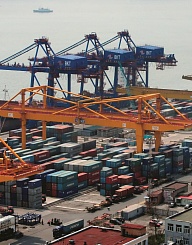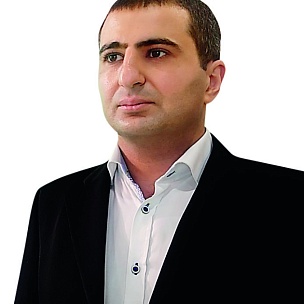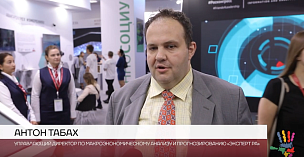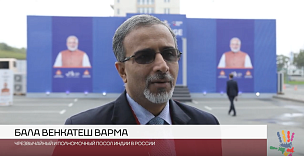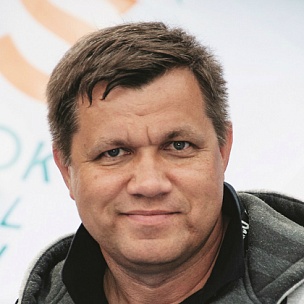Back in December 2013, Russian President Vladimir Putin defined the development of the Russian Far East as a national priority for the 21st century. That was the beginning of the latest chapter in the history of the region, which, since the Tsarist era, has been seen as not just Russias window onto Asia, but as the key to the formation of the entire Eurasian space.
Great transit opportunities and a huge resource base
In addition to transit (the Northern Sea Route, the Trans-Siberian Railway, and the Baikal-Amur Mainline), the Far East has many competitive advantages, primarily in the form of natural resources. A total of 81% of all diamonds in the Asia-Pacific region, 51% of forests, 37% of fresh water, 33% of aquatic biological resources, 32% of gold, 27% of gas, and 17% of oil are concentrated in the Far East of Russia, as well as globally significant deposits of coal, uranium, tin, and polymetals.
«The rapid transformation of the Asia-Pacific region into a major global factory has again put the issue of Russias presence in Asia on the agenda. It has required the launch of special programmes to develop the region», said Deputy Minister for the Development of the Russian Far East, Alexander Krutikov. «The Asia-Pacific region accounts for 59% of the worlds GDP and 50% of foreign direct investment. The region is the worlds largest importer of goods and services, with total revenue of more than USD 8 trillion.»
The resource superiority of the Russian Far East over the other countries of the Asia-Pacific region creates, on the one hand, opportunities for growth (the roll-out of new, largescale production plants), while on the other hand, it embodies a key risk (becoming nothing more than a raw materials supplier to Asia).
The phenomenon of the Asian global factory is built on the principle of industrial offshoring, based on cheap labour. Foreign capital was offered a preferential investment regime, with the proviso that most of the output would be exported to investor countries. It is no coincidence that last year, the US trade deficit with China came to USD 375 billion.
A whole network of such offshore companies has been deployed in the Asia-Pacific region. In India, there are 345 special economic zones, and in China, there are 253 areas offering a preferential investment regime. In Vietnam, as of the beginning of 2017, 437 regions with a preferential regime for investment and entrepreneurial activity had been established. It was vital to create the conditions for investing in future growth areas in Russian Asia that were at least equal to other countries in the region.

Advanced regional development
On 24 October 2013, the first meeting of the Government Commission on the Far East was held, at which the model for the development of the region was approved: advanced special economic zones (ASEZs); Vladivostok Free Port; infrastructure support for investment projects; reduction of electricity tariffs for industrial consumers; the Eastern Economic Forum; electronic visas for foreign citizens visiting Vladivostok; and investment quotas for fishing.
«Over 1,300 new investment projects have been initiated, representing total investment of RUB 3.8 trillion. Of these, 953 projects with investment worth a total of RUB 3.15 trillion and resulting in the creation of 120,000 new jobs are being set up on the basis of agreements», says Nikolay Zapryagayev, Director of the Department for the Development of ASEZs and Vladivostok Free Port at the Far East Development Corporation. «Investors from India, Singapore, Australia, China, Japan, and the Republic of Korea are coming to us, even if they are being cautious.»
In the advanced special economic zones and Vladivostok Free Port, one of the lowest tax burdens on investors in the Asia-Pacific region has been created. On joining the preferential regime, the tax burden will be no higher than 4.5%, and over 13 years of project implementation it will average out at 16.76%. According to this indicator, the Far East is second only to Malaysia, where the level of the tax burden at entry point is 3.3%, and 7.479.4% over 13 years.
Today, 267 projects are being implemented in the Far Eastern ASEZs, and 680 more within Vladivostok Free Port. One of the results of applying the new model of advanced development for the Far East is the macroeconomic data for the previous year: the industrial production index of the region exceeded average Russian levels, and industrial growth was 2.2%; growth in investment in fixed assets was 17.1%; the Far East accounted for 30% of foreign direct investment into the economy of the Russian Federation; construction increased by 9.2%, and agricultural production by 8.2%.

As Nikolay Zapryagayev points out, the growth of the Far Eastern economy in terms of the regions domestic market has almost been exhausted. Around 6 million inhabitants cannot bring about an increase in production, so it is vital to slot into the value-added chain of the world factory.
Increase in surplus value
Reserves for extending the processing of raw exports in the region do exist. Of 2.5 million tonnes of fish products, more than 80% are products with low added value, while 90% of exports are still frozen fish. Meanwhile, more than 2 million hectares of the Far Easts waters are suitable for cultivating marine culture products which are in demand in Asia-Pacific markets.
Last year, the Russian Government approved a package of interconnected laws and regulations covering the distribution of investment quotas. As a result, quotas for the production of aquatic bio-resources were fixed in exchange for investment obligations to build ten fish processing plants and nine fishing vessels at Russian shipyards. Total investment will amount to RUB 53.4 billion.
Last year, production of round timber in the Far East increased by 6.5% compared to 2016 (from 12 million to 12.75 million m3), and the output from advanced processing was 5.1 million m3. Processed products make up 28% of timber exports. The estimated annual cut in the Far East is 91.5 million m3 of timber. The level of its current development is barely 17.5%.
Two resolutions were adopted by the Russian Government on timber tariff quotas and customs duties in December last year. Quotas are granted to companies that export processed products made from Far Eastern timber. Within the quotas established in 2007, the customs duty on round timber will be 6.5%. Outside the established quotas, the duty rate for round timber will increase to 40% in January next year, and to 80% in January 2021.
Chinas reorientation towards developing the market in favour of domestic consumption (Asia for Asia), announced by Xi Jinping at the recent congress of the Central Committee of the Communist Party of China , opens up a historical window of opportunity for the Far East in particular, and for Russia as a whole. This is a chance not to be missed.
RUB 2,267 billions will be invested in 267 projects, which are being carried out in 18 ASEZs in the Far East
Text: Leonid KRUTAKOV


